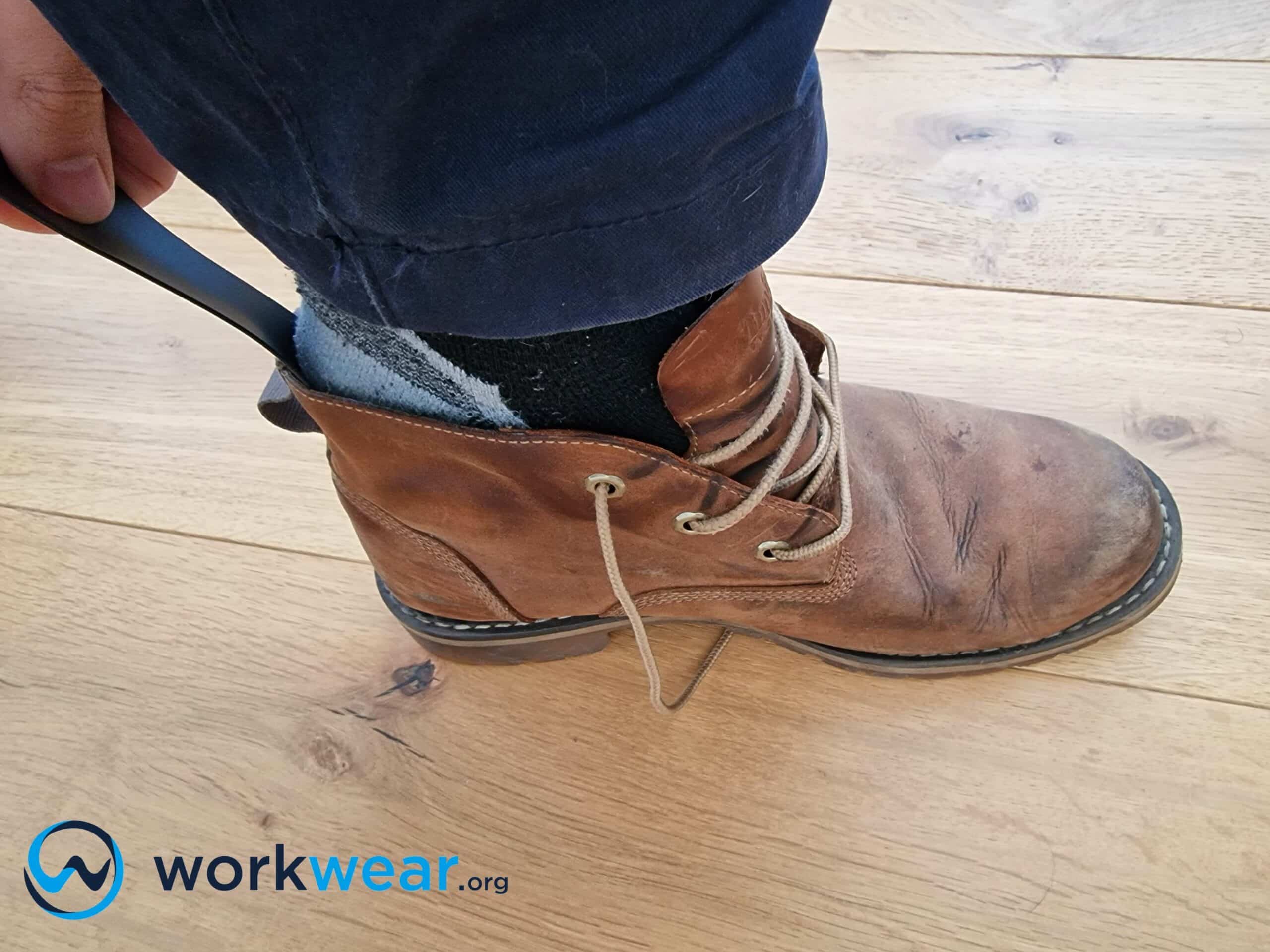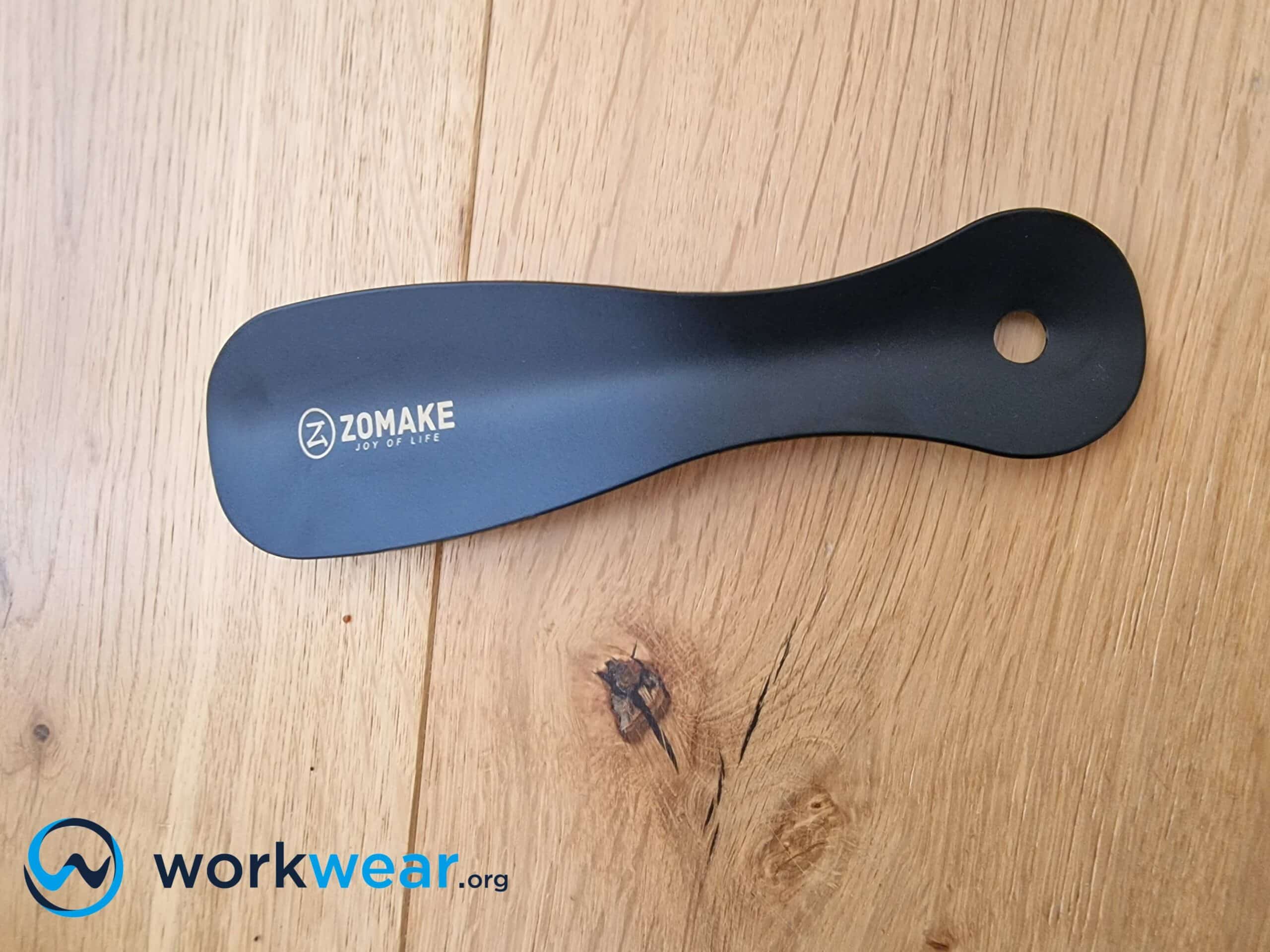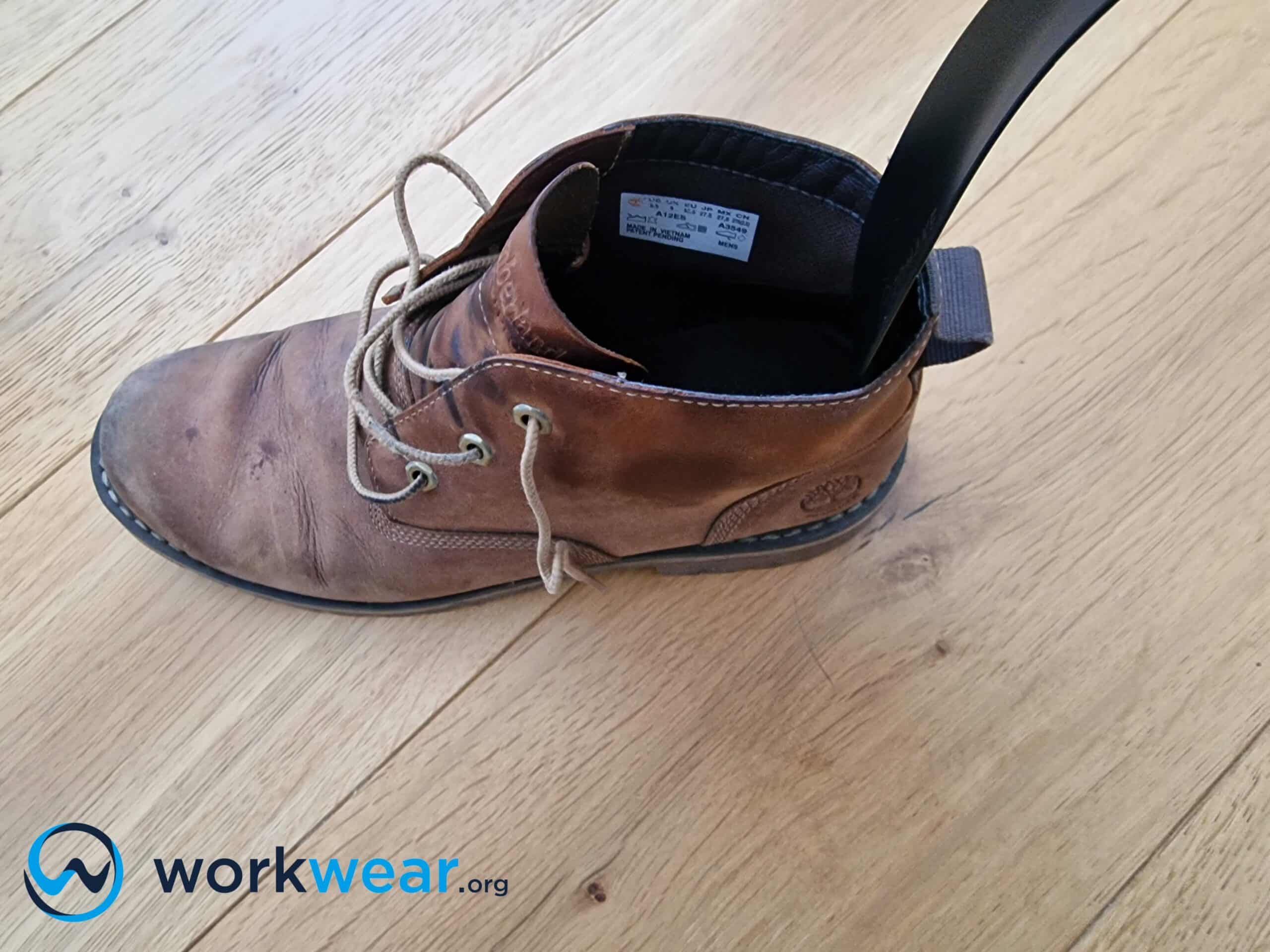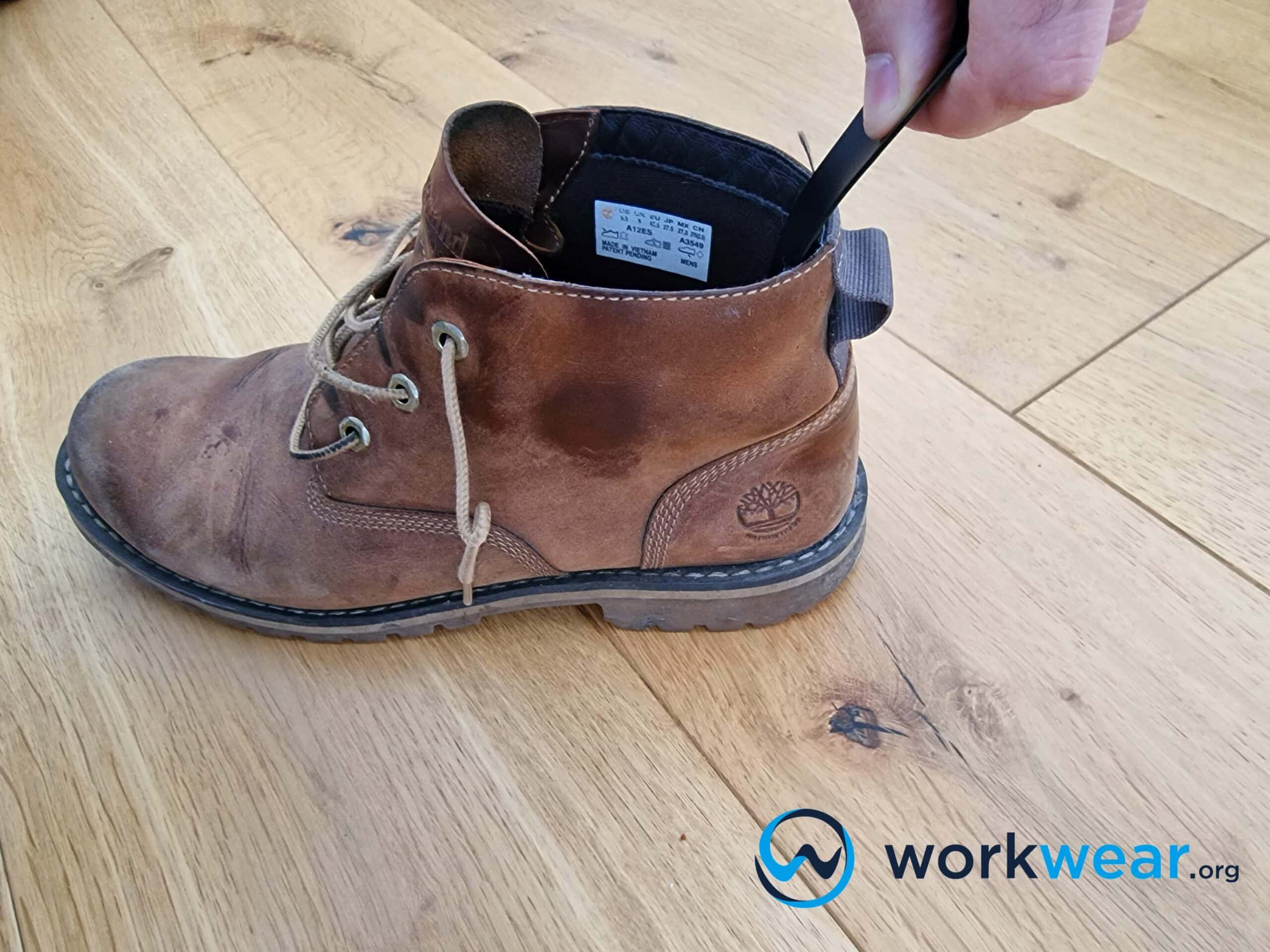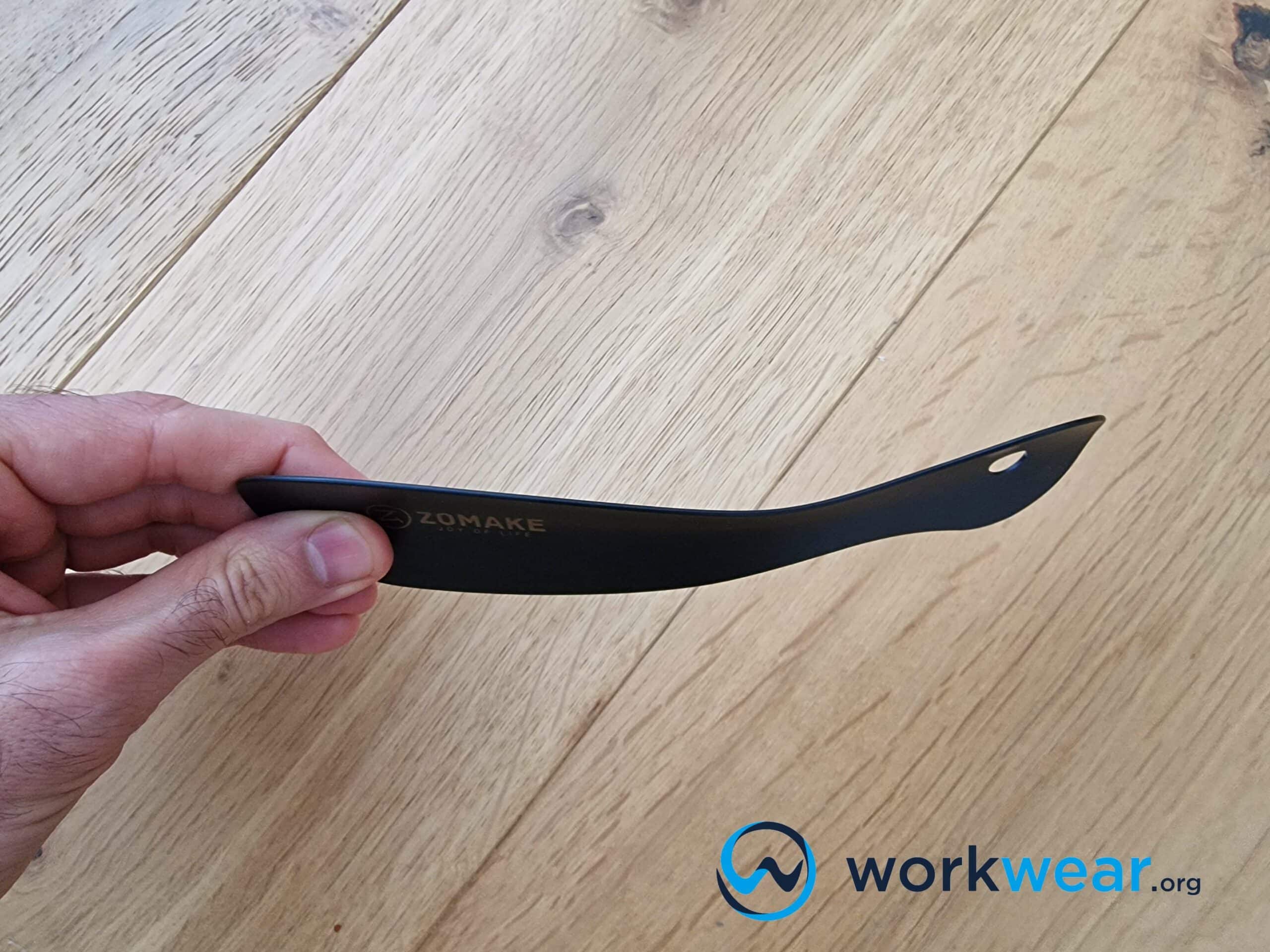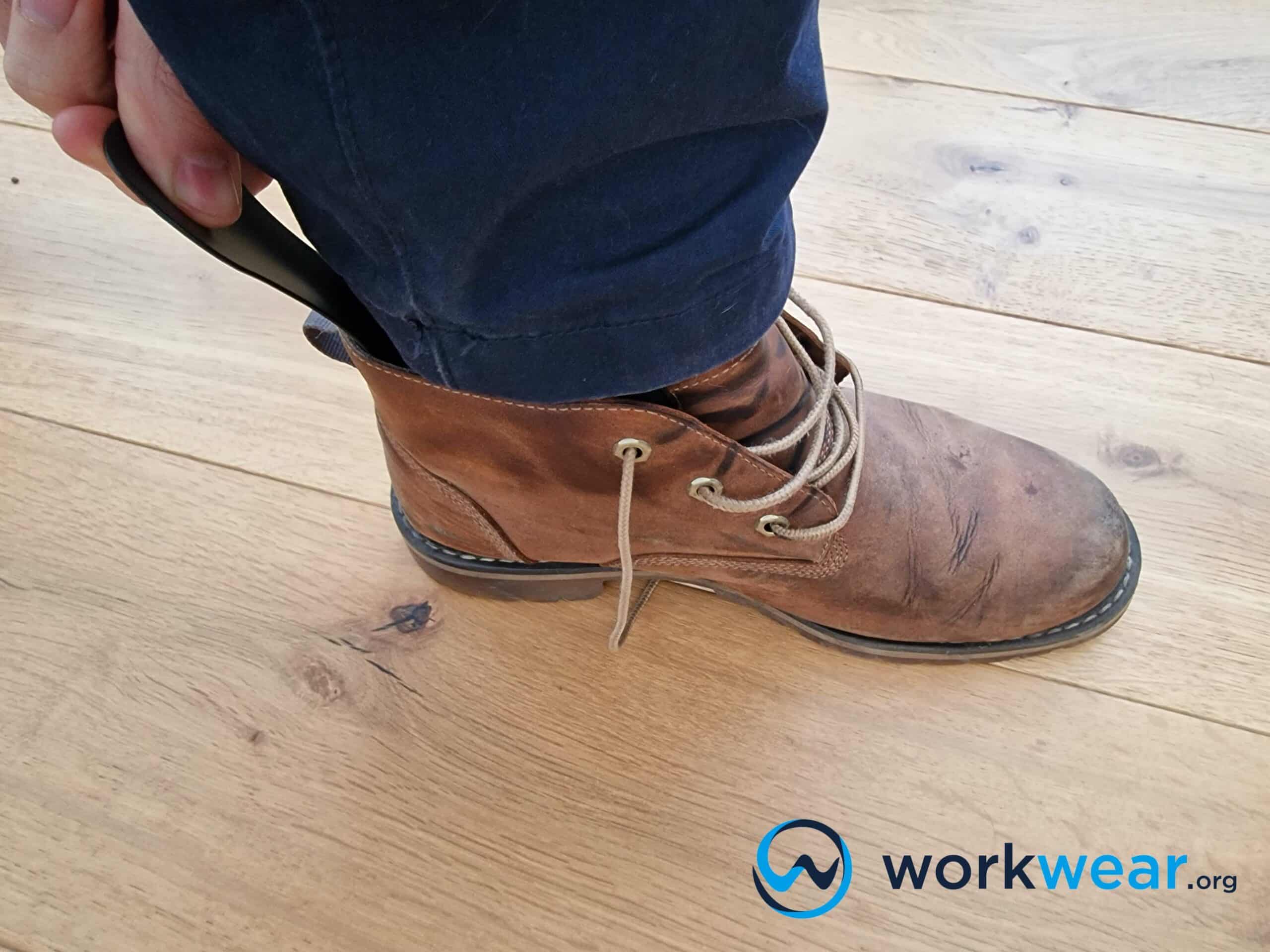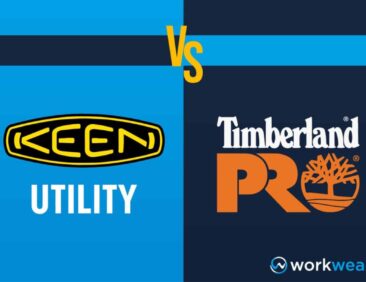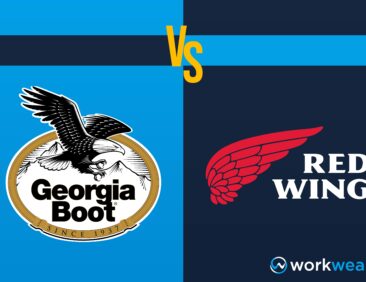What is a Shoehorn – Uses & Advantages
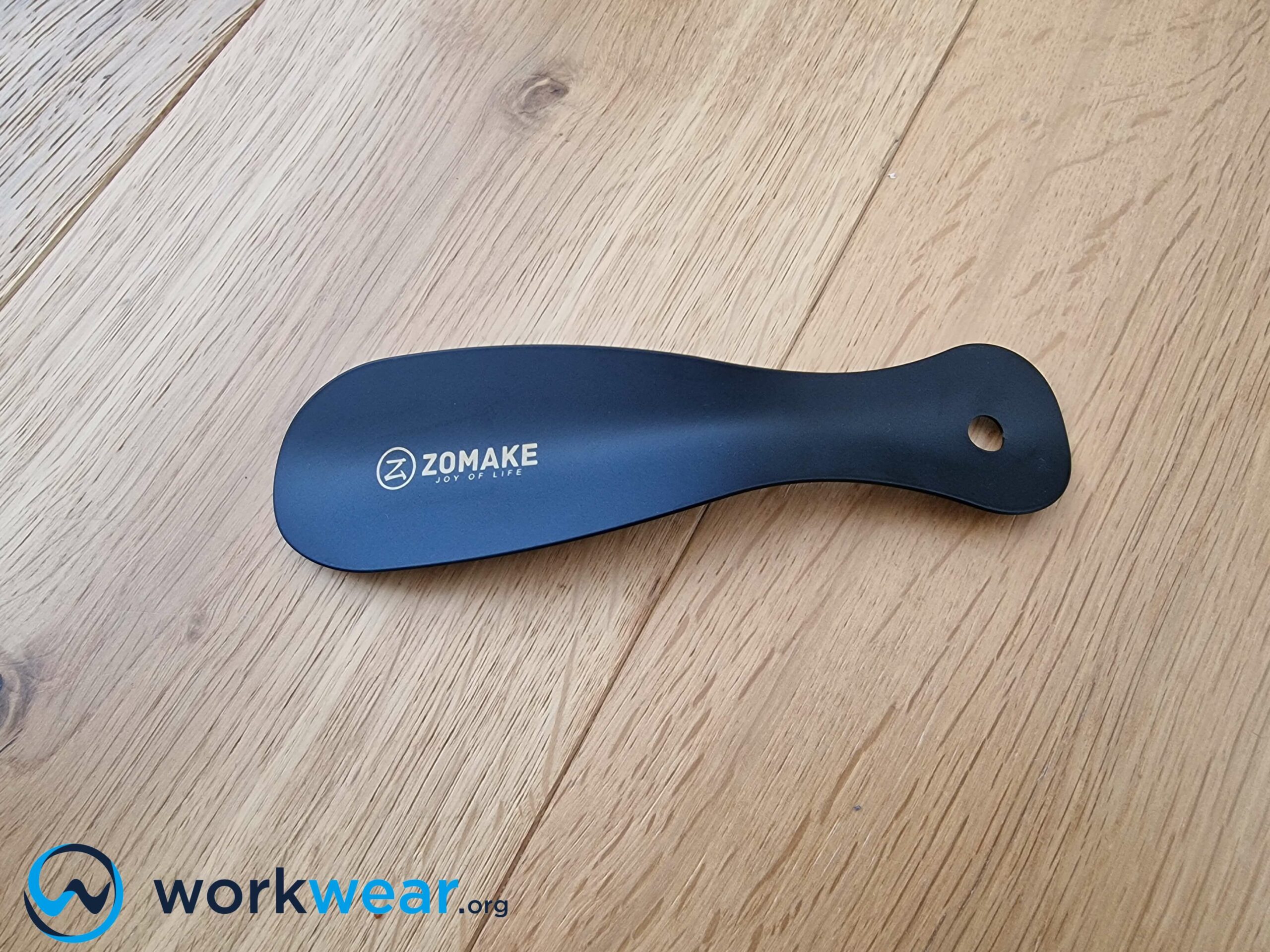
Putting on your shoes at the start of a day is a ritual often done mindlessly, especially if there’s almost no effort involved. However, in some cases, this task can be quite difficult to manage.
This can happen if the shoes are too snug, so there’s not enough space for the feet to go in easily.
It can also be because the upper’s material is stiff and doesn’t flex or widen enough to accommodate the feet’s entry. So instead of forcing your feet into the unwelcoming shoe opening, you can turn to something that makes the shoe-wearing process much easier and more comfortable.
A shoehorn can be your best partner for hassle-free shoe use, and in this article, we’ll discuss this handy tool in more detail.
What is a Shoehorn?
A shoehorn is a tool that helps the heel slide in more effortlessly into a shoe.
It consists of a curved head that resembles a wide spoon, which is then placed at the inner portion of the shoe’s heel to allow the foot to glide in more comfortably.
A short handle typically fits into the shoehorn so the user can maneuver more easily into the correct position with minimal effort.
The handle stabilizes the shoehorn so it doesn’t slip from its position while the heel slides in.
A shoehorn’s handle can come in different lengths corresponding to specific needs.
For example, shoehorns with long handles are better suited to tall boots.
On the other hand, the shorter handles are ideal for bringing on trips or at work.
It is believed that the first shoehorns were used around the Renaissance or the Middle Ages, with their use mentioned as early as the 15th century. There was mention of Queen Elizabeth I buying shoehorns from her shoemaker and later turning to blacksmiths when she wanted steel shoehorns instead.
Shoehorns were originally made with glass or animals’ hooves and horns (hence, the name), with the entire structure made from a single piece of material instead of having two separate components.
Meanwhile, the more luxurious versions were made of silver, ivory, bone, or shell. Metal is still used nowadays for modern shoehorns, which come in wood and plastic.
How to Use a Shoehorn
- Sit in a comfortable position with your feet planted firmly on the floor.
- Partially slide your foot into the shoe until it’s about halfway in.
- Hold the shoehorn firmly by the handle. Place the curved side so it follows the shape of the heel’s inner portion.
- Start sliding more of your foot into the shoe. You should feel your heel touching the shoehorn at the back of the footwear.
- Allow your foot to slide against the smooth surface of the shoehorn until it’s completely inside.
- Remove the shoehorn when the foot has entered fully and do the same with the other foot.
What are the Advantages of a Shoehorn?
No need for uncomfortable bending
Shoehorns can eliminate the need to bend uncomfortably to help the feet ease into snug-fitting shoes.
Instead of bending from the waist – which can be quite difficult for some people – to reach the shoes to pull them on, a shoehorn can be used from a comfortable sitting position.
Long-handled shoehorns can even be used to slip the feet more easily into tall boots from a standing position, which may be preferred by those who find it challenging to bend.
Prevent hand discomfort
The hands do most of the hard work of slipping the feet into tight-fitting shoes. The opening of closed shoes needs to be widened to welcome the feet more easily.
This task can be quite challenging for those with aching joints or problems with moving their hands.
It’s even more uncomfortable if a finger needs to be inserted at the back of the shoe to guide the foot in more easily.
Shoehorns make the shoe-wearing task much easier and ease the burden off the hands to protect them from further discomfort.
Protect the shoes’ material from damage
Pulling on the back of the shoes regularly to help the feet glide in can take its toll before long. In addition, the material in the heel area can become more prone to tears and abrasion when it’s constantly being pulled or bent to accommodate the feet’s entry.
Shoehorns protect the shoes from becoming damaged by helping the feet slide into the footwear without forcefully pulling on the back section.
Help maintain the heel counter’s structure
A heel counter is designed to be rigid to keep the heel secured while walking and standing.
When putting on tight shoes without helpful tools, the foot may forcefully step on the heel counter while trying to get in.
This can lead to the heel counter losing its stiffness and its ability to stabilize the foot.
Using a shoehorn can protect the heel counter from damage, allowing it to retain its rigid structure to support the heel properly.
Make shoe-wearing without socks easier
Forcing the feet into tight shoes is challenging and uncomfortable.
It becomes even more problematic for sockless feet because the skin can scrape against the rigid material of the shoes.
Even with the help of the hands holding the shoes’ opening wider, the skin in the heel area can still rub uncomfortably against the shoes’ interior.
Using shoehorns can make sockless feet glide more easily into the shoes for a more comfortable and convenient experience.
Conclusion
Shoehorns are nifty tools that make shoe-wearing much more comfortable and convenient. They’re straightforward and require minimal effort but always deliver the same reliable results. Shoehorns remove the need to bend the body unnaturally to get the feet into tight shoes and protect the feet against rubbing against the footwear’s interior – especially with no socks on. They’re ideal for those with aching hands because they take on the stress of easing the feet into the shoes. Shoehorns also prevent shoe damage, particularly at the back in the heel counter area. These useful tools remove the difficulties of slipping into tight-fitting shoes for more hassle-free experiences.
FAQ's
- Which shoehorn material is most durable?
- Metal shoehorns are the most durable and last longer than wood or plastic.
- Are shoehorns suitable only for use with dress shoes?
- No, they can also be used with boots and even sneakers if they’re difficult to put on because of a snug fit.
- Are shoehorns with longer handles better?
- It depends on the user’s preference. For example, long handles may benefit those who don’t want to put on their shoes with significant bending or while in a sitting position. Long-handled shoehorns are also more suitable for use with tall boots.
- Can shoehorns have an impact on the shoes’ appearance?
- Yes, shoehorns can stop creases from developing on the back section of the shoes, as the feet don’t need to step into the heel to get in.
